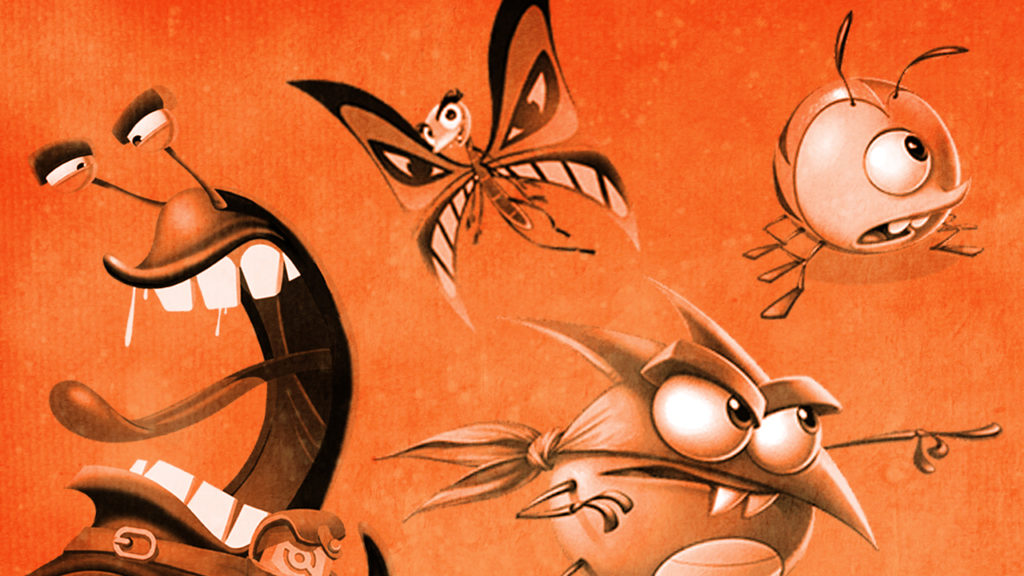Best Fiends, a mobile puzzle game, came out in 2014 and its success grows every year. In 2018, revenue for the game grew 65 percent, getting to around $69 million. It’s been downloaded over 86 million times and the game has about 1.8 million daily active players.
Philip Hickey, EVP of brand and marketing at Seriously—the creators behind Best Fiends—spoke with AList during the DEW conference in Marina Del Rey, California. Hickey talked about how he leverages influencer marketing got promote Best Fiends and the changes in the influencer space since he worked as vice president at Rovio, where he led marketing strategies of the highly popular game Angry Birds.
In a broad sense, how are you using influencers?
We’re using influencers in two ways. First and foremost, it’s the easiest way to measure driving installs to our games. Secondly, to help build the brand. There is definite power of frequency and repetition that helps the brand build, but that’s the least measurable part—so we have to back it up in installs. What we’ve done primarily in the YouTube space is we’ve figured out a cost-per-view that works for us that backsets the cost to install and we can value it from there.
We use them for brand awareness and for reaching a new audience. Without many videos, we hope some our audience stays with us as they do and the community building has been a quarter of building Best Fiends. We always like every post, engagement and we follow, interact and we take feedback. By doing so many videos naturally, our audience stays with us. If there is a trust with the influencer and the product they’re selling, then the chance of sticking with us for long-term is highly likely.
Do you use larger influencers or many, smaller influencers
We use a bit of both. We measure by engagement, so when we were small and didn’t have a big budget we used a couple of massive influencers, but over time we’ve learned three categories of influencers that work well for us and that’s beauty and lifestyle, family and the LGTBQ community. We use everything from the biggest to the smallest influencers—as long as they’re authentic. We [also] look for influencers that are creative and put in the effort because it usually matches the business results we are looking for.
What social platforms are your influencers using?
We’ve tried everything. YouTube is the biggest and that works for us. We love it and the influencers can also showcase the game. But we’ve also done Instagram, Twitter, Facebook Live; we were the first brand to do a Periscope influencer campaign. We try everything to we see what works. However, I think the tried, true and tested platform that works best for us has been YouTube.
How has influencer marketing changed since your days at Rovio working on Angry Birds?
It [has] changed massively. It’s funny, we’ve used some of the same influencers at Seriously that we used at Rovio, but for Angry Birds, someone paid us to do the integration. It’s a different transaction than with Best Fiends. I think the influencer space was unknown [then], but there was something bubbling that was super powerful.
I think it’s become a much more mature industry and I believe influencers have realized they are their [own] commodity and we [all] need to deliver on what is agreed upon. I’ve seen a lot more professionalism over the last couple years and a lot more conversation on how to do it right. We always believe in giving the influencer room to be creative. We generally give them three talking points and we let them be as creative as they can be speaking to their audience and it works much better.
What’s changed in marketing for mobile games since your time at Rovio?
The competition, the number of platforms and the consolidation of competitors have changed. It’s massively competitive. When I was at Rovio we used to look at other games as our competitors, and now we look at [platforms like] Hulu, Netflix as competitors. Anything where someone spends time on their phone or mobile device with, is [now] our competitor.
We are in the brand building business, we want Best Fiends to be the next generation IP and we would like to make a series and products down the road. The results of the game are continually improving every year, so we are building towards that.
Do you hire any agencies to help vet and manage influencers?
We do. We have a lot of direct connections because now we’ve been doing this for four years. In scaling influencer marketing, there is no easy way to do it. We want to vet every talent, so we look at what they’ve done like what their last couple videos do, the relationship of comments and likes in the video and its still a very manual process, so we work directly and we look at everything.
We also have a couple of agencies that have been good partners. I think there are [also] exciting platforms emerging like Matchmade. It’s an interesting formula because it streamlines the process, the middle man and helps the direct connection a bit better.
What do you think is the future of influencers?
I think you’ll see influencers regularly become part of a brand’s marketing mix which wasn’t necessarily true before. The first question everyone in the influencer space asks themselves is why would I want an influencer, what do I want out of this relationship or transaction, and then you go from there.
I think people are getting smarter about what they want and influencers are getting brighter in how to deliver what brands want, so the relationship should be good on both sides.

